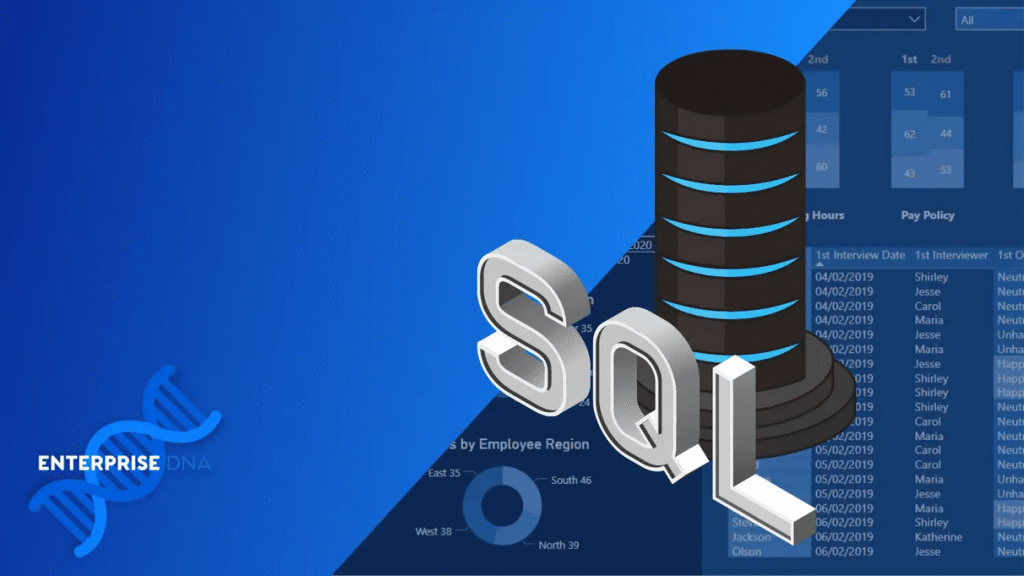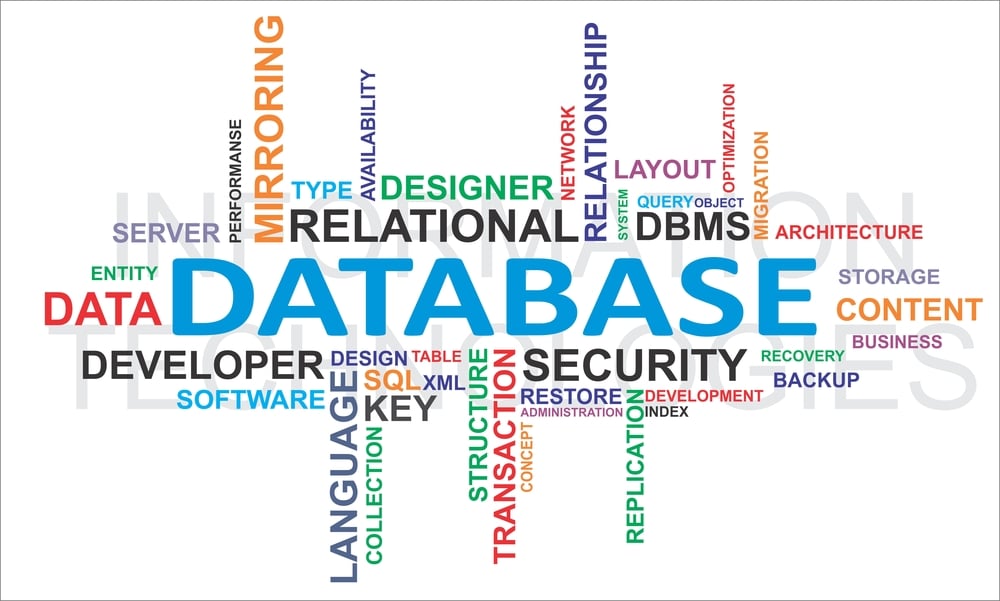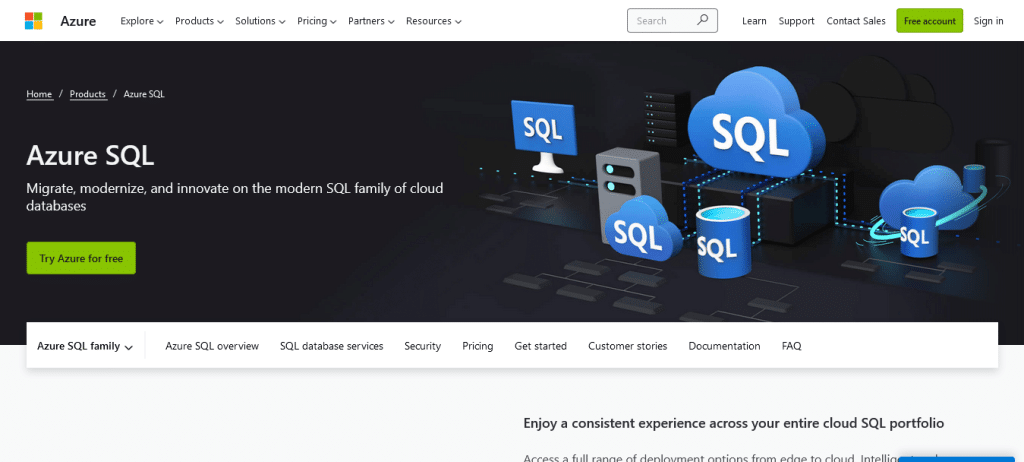SQL, or Structured Query Language, has been a fundamental tool in the realm of data management since its inception in the 1970s.
SQL is a domain-specific language used for managing and manipulating data stored in relational database management systems (RDBMS). It is used for a wide range of tasks, including creating and managing databases, inserting, updating, and deleting data, querying data for analysis, and managing user access and permissions.
In this article, we will delve deeper into the various components of SQL and explore its many uses across different database management systems. We will also discuss real-world applications and how SQL has become the backbone of numerous data-driven processes in various industries.
Let’s get started!
What Is SQL? (Structured Query Language)

SQL is a versatile and widely-used programming language specifically designed for managing and manipulating data within relational databases.
It was originally developed in the early 1970s by IBM researchers Raymond Boyce and Donald Chamberlin. It went commercial in 1979 and has evolved over the years and now has various dialects to accommodate different types of databases.
However, despite the variations, SQL’s core concepts remain consistent. Today, it’s the golden standard for database management. It is used by some of the world’s biggest brands, including Facebook and Google, to facilitate the efficient querying, insertion, updating, and deletion of data, as well as managing database structures and user access.
As you work with SQL, you’ll find it helps you store, retrieve, and manipulate data effectively across various applications and systems, making it an essential skill for many professionals in data science, software development, e-commerce, machine learning, and business intelligence fields.
In the next section, we’ll take a look at some of the common uses of SQL and explore real-world examples that illustrate its significance in various industries and applications.
What is SQL Used For? – 7 Top Uses

As a versatile and powerful language, SQL serves a variety of purposes in the management and manipulation of data within relational databases.
This section will explore some of the most common uses of SQL, highlighting the breadth of tasks it can accomplish and demonstrating its importance in today’s data-driven landscape.
Ok, le’s get started.
1. Database Creation and Management
Using SQL, you can efficiently manage databases by creating, altering, and deleting tables, indexes, and other database objects. This enables you to organize your data and optimize storage and performance. You can use it to:
- Create tables and schemas: SQL enables users to create new databases and define the structure of tables and schemas within the database, establishing the necessary foundation to organize and store data.
- Alter tables and schemas: With SQL, users can modify existing database structures, such as adding or removing columns, changing data types, or renaming elements, allowing for adjustments as requirements evolve.
- Delete tables and schemas: SQL also allows for the removal of database structures that are no longer needed, helping maintain an organized and efficient database environment.
Example: An e-commerce company can use SQL to create and manage databases for storing product information, customer details, and order history.

2. Data Manipulation and Retrieval
SQL allows you to retrieve specific data from databases easily, letting you extract information that meets your criteria. With its querying capabilities, you can:
- Insert into tables: SQL provides the ability to insert data into tables, populating them with the necessary information to support various business functions and analyses.
- Update existing data: SQL enables users to modify the data stored within tables, ensuring that information remains accurate and up-to-date.
- Delete data from tables: SQL allows users to remove unnecessary or outdated data from tables, keeping databases clean and optimized.
- Query data from tables: SQL’s querying capabilities empower users to extract and analyze data from tables using various techniques, such as filtering, sorting, aggregating, and joining data from multiple tables.
Example: A hospital can use SQL to retrieve patient records, update medical history, and manage appointment schedules.
3. Data Analysis and Reporting
SQL’s powerful querying capabilities make it a popular choice for data analysis and reporting. Users can perform complex data filtering, sorting, and aggregation to derive valuable insights from large datasets, driving informed decision-making and strategic planning.
Some of the key tasks in data analysis and reporting that SQL facilitates include:
- Filtering and sorting data based on specific criteria: SQL allows users to apply conditions to their queries using the WHERE clause, enabling them to retrieve only the data that meets their requirements. Additionally, the ORDER BY clause can be used to sort the results based on specific columns or expressions.
- Performing calculations and aggregations on data: SQL supports various mathematical and statistical functions, such as SUM, AVG, MIN, and MAX, which can be used to perform calculations and aggregations on the data for deeper analysis.
- Combining data from multiple tables using joins and subqueries: SQL provides several methods to combine data from different tables, such as INNER JOIN, OUTER JOIN, and subqueries, helping users to access related data and derive insights that span multiple tables.
- Grouping data to generate summaries and statistics: The GROUP BY clause in SQL allows users to group data based on one or more columns, enabling the generation of summaries and statistics for each group. This can be particularly useful for identifying trends or patterns in the data.
- Generating time-based analysis and trends: SQL offers various date and time functions, such as DATE_ADD, DATE_SUB, and DATE_FORMAT, which can be used to analyze data based on specific periods, identify seasonal patterns, or forecast future trends.
- Creating ad hoc reports for decision-making: SQL enables users to create custom reports on the fly, tailoring the output to specific business needs and decision-making processes.
Example: A financial institution can use SQL to analyze transaction data, detect fraudulent activity, and generate detailed Excel reports on customer spending patterns.

4. Business Intelligence and Data Warehousing
SQL plays a crucial role in business intelligence and data warehousing, where large volumes of data are consolidated, transformed, and stored for further analysis.
Its scalability and optimization features enable it to handle demanding tasks such as Extract, Transform, Load (ETL) processes and data mining.
Key tasks in business intelligence and data warehousing that SQL supports include:
- Extracting data from multiple sources: SQL can be used to extract data from various sources, such as relational databases, flat files, or even APIs, facilitating the consolidation of data in a central repository.
- Transforming and cleansing data: SQL provides a wide array of functions and operations that can be used to transform and cleanse data, such as string manipulation, date formatting, and conditional expressions.
- Loading data into the data warehouse: SQL’s bulk loading capabilities enable the efficient insertion of large volumes of data into the data warehouse, minimizing the time and resources required for the loading process.
- Managing data warehouse schema and metadata: SQL can be used to define and maintain the structure of the data warehouse, including tables, views, indexes, and constraints, ensuring that the data is organized and stored efficiently.
- Optimizing query performance: SQL offers various optimization techniques, such as indexing, partitioning, and materialized views, which can be used to improve the performance of queries on large datasets in the data warehouse.
- Implementing data security and access control: SQL’s Data Control Language (DCL) component allows database administrators to manage user access and permissions within the data warehouse, ensuring data security and compliance.
Example: A retail chain can use SQL to aggregate sales data from multiple stores in a data warehouse, providing insights into sales trends and inventory management.
5. Web Application Development
SQL is widely used in the development of web applications, as it facilitates efficient data storage and retrieval for dynamic content generation.
Web developers often integrate SQL with popular programming languages, such as Python, PHP, and JavaScript, to build data-driven websites and applications.
Key tasks in web application development that SQL supports include:
- Creating and managing the backend database: SQL can be used to design and maintain the database structures for web applications, ensuring that the data is organized and stored efficiently.
- Implementing user authentication and authorization: SQL allows developers to store and manage user credentials and roles, enabling the creation of secure web applications with access control mechanisms.
- Building dynamic web pages and content: By querying and manipulating data with SQL, developers can create web pages that display dynamic content based on user input, preferences, or other criteria.
- Implementing search functionality: SQL’s powerful querying capabilities can be leveraged to build search functionality within web applications, allowing users to find relevant information quickly and easily.
- Managing user-generated content: SQL enables developers to store, manage, and moderate user-generated content, such as comments, ratings, and reviews, fostering user engagement and interaction within web applications.
- Logging and monitoring user activity: SQL can be used to log and analyze user activity within web applications, providing insights into user behavior and helping developers optimize the user experience.
Example: A job portal website can use SQL to manage job listings, user profiles, and application data, enabling users to search and apply for jobs seamlessly.

6. Integration With Other Software and Systems
SQL can be easily integrated with other software and systems, such as Customer Relationship Management (CRM) systems, Enterprise Resource Planning (ERP) systems, and Geographic Information Systems (GIS).
This integration enables organizations to harness the power of SQL to manage and analyze data across various business functions and domains.
Key tasks in software and system integration that SQL supports include:
- Synchronizing data between systems: SQL can be used to extract, transform, and load data between different systems, ensuring that the data is consistent and up-to-date across the organization.
- Combining data from disparate sources: SQL allows users to query and join data from multiple sources, enabling them to perform complex analyses that span multiple systems and domains.
- Automating data-driven processes: SQL can be used to automate various data-driven processes within integrated systems, such as updating inventory levels in an ERP system based on sales data from a CRM system.
- Enhancing system functionality with custom SQL queries: SQL’s extensibility allows users to create custom queries and functions that extend the capabilities of integrated systems, enabling them to address specific business needs or challenges.
- Facilitating data-driven decision-making across the organization: By integrating SQL with other systems, organizations can access and analyze data from various sources, empowering them to make informed decisions that drive growth and innovation.
Example: A logistics company can use SQL within its GIS application to analyze and optimize delivery routes based on geospatial data.

7. User and Access Management
SQL plays a crucial role in managing user access and permissions within relational databases, ensuring data security and compliance with organizational policies.
SQL has a component that enables database administrators to control user privileges and maintain a secure database environment.
Key tasks in user and access management that SQL supports include:
- Creating and managing user accounts: SQL can be used to create and manage user accounts within the database, allowing administrators to define specific roles and responsibilities for each user.
- Defining user access levels: SQL enables administrators to define and enforce access levels for users, ensuring that they can only access the data and functionalities relevant to their role.
- Granting and revoking permissions: With the help of the GRANT and REVOKE commands, database administrators can assign and remove permissions for users, controlling their access to specific database objects, such as tables, views, and stored procedures.
- Implementing role-based access control: SQL supports the concept of roles, which can be used to group users with similar access requirements, making it easier to manage and maintain permissions across the organization.
- Auditing user activity: SQL can be used to log and monitor user activity within the database, providing insights into user behavior and helping administrators detect unauthorized access or potential security breaches.
- Ensuring data privacy and compliance: By managing user access and permissions effectively, SQL helps organizations maintain data privacy and comply with relevant regulations, such as the General Data Protection Regulation (GDPR) or the Health Insurance Portability and Accountability Act (HIPAA).
Example: A healthcare organization can use SQL to manage user access to patient records, ensuring that only authorized personnel can view sensitive information and maintaining compliance with HIPAA regulations.
These are just some examples of the many powerful use cases for SQL. By learning SQL, you can effectively interact with and manipulate databases to meet your needs and create valuable insights for your organization.
In the next section, we take a look at the components of SQL that make all of its use cases possible.
How It All Works: 4 Key Components of SQL

The main components of SQL can be broadly divided into four categories, each serving a specific purpose in managing and interacting with databases:
1. Data Definition Language
Data Definition Language (DDL) provides you with the ability to create, modify, and delete database objects, such as tables or indexes. Some common DDL statements include:
- CREATE TABLE – this statement allows you to create a new table in your database, defining the structure and the columns.
- ALTER TABLE – with this statement, you can modify an existing table’s structure, like adding or deleting columns, or changing column data types.
- DROP TABLE – use this statement to remove an entire table from your database, including all its data and structure.
2. Data Manipulation Language
Data Manipulation Language (DML) focuses on the management and modification of data within your database tables. Common DML statements include:
- SELECT – with this statement, you can retrieve data from one or more tables, allowing you to filter, sort, and manipulate the data as needed.
- INSERT – use this statement to add new data rows to a table, specifying the values for each column.
- UPDATE – this statement allows you to modify the data in an existing row, changing the values for one or more columns.
- DELETE – with this command, you can remove data rows from a table, either individually or in groups based on a specified condition.
3. Data Control Language
Data Control Language (DCL) is responsible for managing access to your database, ensuring that the right users can perform the right actions. Common DCL statements include:
- GRANT – this statement is used to give permissions to users or roles, allowing them to perform specific actions, such as reading or writing data in the database.
- REVOKE – use this statement to remove previously granted permissions from users or roles, preventing them from executing specific actions in the future.
4. Transaction Control Language
Transaction Control Language (TCL) is used to manage and control transactions within the database, ensuring data consistency and integrity. Its main statements are:
- COMMIT – Facilitates transaction completion.
- ROLLBACK – For undoing changes
- SAVEPOINT – For establishing intermediate points within transactions, respectively.
By understanding and using these SQL components effectively, you can create, manage, and secure your database efficiently and according to your needs.
Next, we’ll take a look at some advantages of using SQL.
What Are The Advantages of Using SQL?

SQL offers many advantages in working with databases and data management. As you dive into the world of SQL, you’ll find that there are 4 main advantages.
4 Main Advantages of Using SQL
- Commonality of language: Since SQL is widely used across various IT systems, you can easily transfer your skills to different software and programming languages. As a result, SQL becomes an invaluable tool throughout your career.
- Efficient data retrieval: With SQL, you can quickly retrieve large amounts of data from databases. It enables operations like insertion, deletion, and manipulation of data with minimal effort, optimizing your workflow.
- User-friendly: SQL doesn’t require extensive coding skills. Instead, it uses simple queries to filter, sort, and mine data, making it an accessible option for users with diverse backgrounds.
- Adaptability: SQL plays a significant role in various fields such as data science, allowing professionals to query data and retrieve specific sets of relevant information. This adaptability saves you time and enables more efficient delivery of results.
By harnessing the power of SQL, you’ll find it much easier to manage databases, analyze data, and communicate with various IT systems.
As you continue to learn and apply SQL in your work, you’ll appreciate its simplicity and effectiveness in solving complex data management tasks.
That said, SQL isn’t perfect; in the next section, we take a look at its challenges and limitations.
Challenges and Limitations of SQL
While SQL has numerous advantages that make it a popular choice for managing and manipulating data in relational databases, it is not without its challenges and limitations.
This section will discuss some of the key issues that users may encounter when working with SQL, providing a more balanced understanding of its role in the data management landscape.
1. Handling complex relationships
SQL is designed for relational databases, which are based on a tabular structure with predefined relationships between tables.
In cases where data relationships are more complex or hierarchical, SQL might not be the most efficient or intuitive solution, leading users to consider alternative data models, such as graph databases.
2. Learning curve and expertise
Although SQL syntax is often considered easy to learn and use, mastering its more advanced features and optimization techniques can be challenging.
Developing the necessary expertise to write efficient and complex queries may require substantial time and effort, especially for users who are new to the field of data management.
3. Vendor-specific differences
While SQL is a standardized language, the various database management systems may implement proprietary extensions or variations in their SQL dialects.
These differences can lead to compatibility issues when migrating queries or scripts between different systems and may require users to adjust their SQL code accordingly.
4. Concurrency and locking issues
As SQL databases grow in size and complexity, managing concurrent access to data can become challenging. In some cases, poorly designed queries or transactions can lead to locking issues and reduced performance, which can be difficult to diagnose and resolve.
5. Security concerns
SQL databases can be vulnerable to security risks, such as SQL injection attacks, if proper precautions are not taken. Ensuring that SQL code and database systems are secure requires vigilance and expertise in best practices for data protection and user access control.
By being aware of these challenges and continually learning and adapting to new developments in the field, users can harness the power of SQL while mitigating potential drawbacks, ultimately enabling them to effectively manage and analyze data in a variety of contexts.
Despite these challenges, SQL is still very popular and there are a variety of database management systems that use it. In the next section, we’ll take a look at some of them.
Popular SQL Database Management Systems

Relational database management systems rely on SQL as their primary language for managing and interacting with data. As an SQL developer, it’s a good idea to familiarize yourself with different systems.
In this section, we take a look at some popular SQL database management systems that you may consider using for your projects.
1. MySQL
MySQL is one of the most popular open-source database management systems available. It has been at the top of the popularity ranking for several years.
Its popularity can be attributed to its cost-effectiveness, compatibility with most applications, and its ability to run on popular platforms like Linux, Windows, and macOS. MySQL was started in 1994 by Swedish programmers David Axmark and Michael Widenius.
2. Microsoft SQL Server
Microsoft SQL Server is another widely-used database management system. It’s an easy-to-use solution that is well-suited for situations with more complex requirements.
SQL Server offers a range of features and capabilities, making it a popular choice for organizations of all sizes. Furthermore, Microsoft provides extensive support, making it a reliable option for your database needs.
3. PostgreSQL
PostgreSQL is an open-source relational database management system that is known for its robustness, scalability, and versatility. It has a strong community backing, which contributes to its continuous development and improvement.
If you’re looking for a database system that can handle a wide range of data types and has excellent support for geographic data, PostgreSQL might be a great option for you.
4. Oracle Database
As one of the most widely-used commercial database management systems, Oracle Database is known for its high-performance capabilities and extensive feature set.
It is often used by large enterprises for its advanced security, reliability, and scalability. If your project requires a robust and powerful solution with comprehensive support, Oracle Database could be a suitable choice for your needs.
When selecting a database management system, it’s crucial to assess your specific needs and requirements. By understanding the strengths of each system, you can make an informed decision on the best solution for your project.
Final Thoughts
SQL is a powerful data query language that can facilitate tasks such as data extraction, manipulation, and analysis, making it a sought-after skill for software developers, data analysts, data scientists, finance professionals, and more.
It has been an integral part of the data management landscape since its inception in the 1970s. Its ease of use, versatility, and powerful querying capabilities have made it the go-to language for managing and manipulating big data in relational databases in data analytics and across various industries and applications.
We have explored the various uses of SQL, its components and some SQL commands, the different back-end database management systems that support it, and its advantages and challenges.
To learn more about how to use SQL with Microsoft tools like Power BI, check out the SQL tutorial playlist below:








